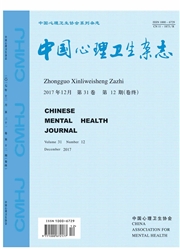

 中文摘要:
中文摘要:
目的:探讨女性在不同生理周期对男性吸引力面孔的注意偏向。方法:选取51名女大学生,采用3吸引力(高/中/低)2提示有效性(有效/无效)2生理周期(月经期/排卵期)的被试内设计,运用线索提示的实验范式,考查其在不同生理周期对男性吸引力面孔注意偏向的差异。结果:对反应时的重复测量方差分析发现,提示有效性×生理周期的交互作用有统计学意义[F(1,50)=5.75,P〈0.05],排卵期有效提示的反应时快于无效提示的反应时[(368.4±5.1)ms vs.(377.4±5.5)ms,P〈0.001];对正确率的重复测量方差分析显示,吸引力、提示有效性和生理周期的主效应及其交互作用均无统计学意义(均P〉0.05)。结论:处于排卵期的女大学生对男性面孔存在注意偏向,而在月经期对男性面孔不存在注意偏向。
 英文摘要:
英文摘要:
Objective: To examine the attention bias to attractive male faces in female participants with different physiological cycles. Methods: The 3 Attractiveness( High / medium / low) × 2 Cue( Validity / invalidity) × 2Physiological cycles( Menstrual / ovulatory) w ithin-subject design w ere employed to investigate the differences of attention bias to attractive male faces in 51 female college students w ho w ere in different physiological cycles using the cue-target paradigm. Results: The repeated-measures ANOVA on reaction times( RTs) show ed significant interaction effect of cue validities × physiological cycles [F( 1,50) = 5. 75,P〈0. 05],w ith participants had a shorter RT on validity than on invalidity in the ovulatory period [( 368. 4 ± 5. 1) ms vs.( 377. 4 ± 5. 5) ms,P〈0. 001].Similar repeated-measures ANOVA show ed there w ere no main or interaction effects on the accuracy rates( P〉0. 05). Conclusion: Female college students may have attention bias to male faces in the ovulatory period, rather than in the menstrual period.
 同期刊论文项目
同期刊论文项目
 同项目期刊论文
同项目期刊论文
 期刊信息
期刊信息
